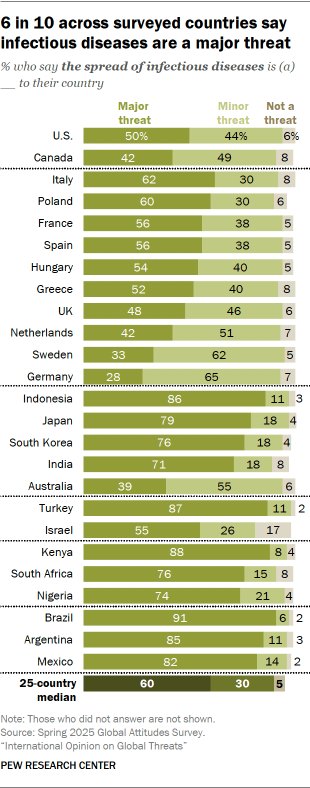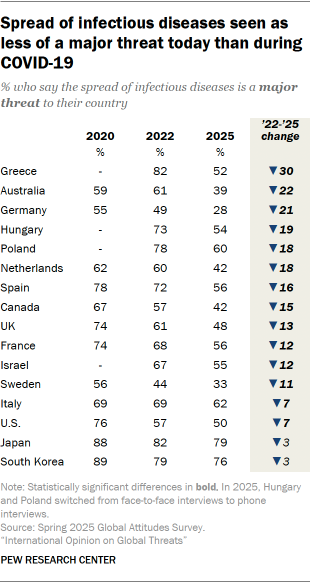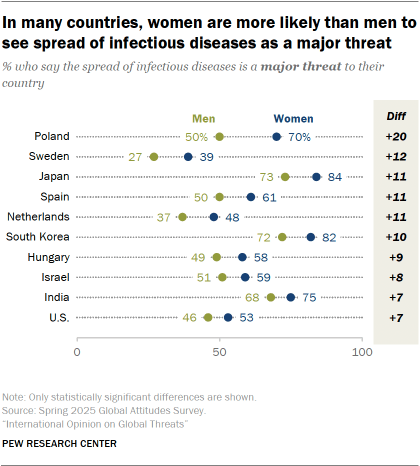- A median of 60% of adults across 25 nations say the spread of infectious diseases is a major threat to their country. A median of 30% say this is a minor threat, and 5% say it is not a threat.
- Concern about the spread of infectious diseases is generally higher in middle-income countries than high-income ones. A median of 85% across nine middle-income countries say this is a major threat, while a much smaller median share (53%) say this across 16 high-income countries. (Read Appendix A for more information on how we classify high- and middle-income countries.)

In 16 of the 25 countries surveyed, majorities believe the spread of infectious diseases poses a major threat. This is the case in all nine middle-income countries included in the survey, but also in several high-income countries: France, Israel, Italy, Japan, Poland, South Korea and Spain.
Views over time
The share of people who say the spread of diseases poses a major threat has decreased since 2022 across nearly all the high-income countries included in the survey.

For example, 28% of Germans now view the spread of infectious diseases as a major threat to their country, down from 49% in 2022. In 2020, during the COVID-19 pandemic, an even larger share of Germans (55%) held this view.

Views by gender

In 10 countries, women are more likely than men to say the spread of infectious diseases is a major threat to their nation.
In Sweden, for example, women are 12 points more likely than men to see this as a major threat (39% vs. 27%).
Gender differences also appear in Hungary, India, Israel, Japan, the Netherlands, Poland, South Korea, Spain and the U.S.




